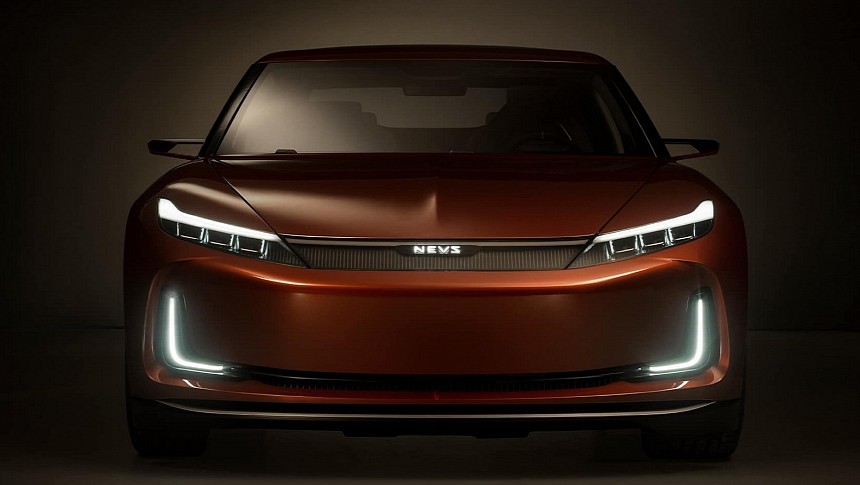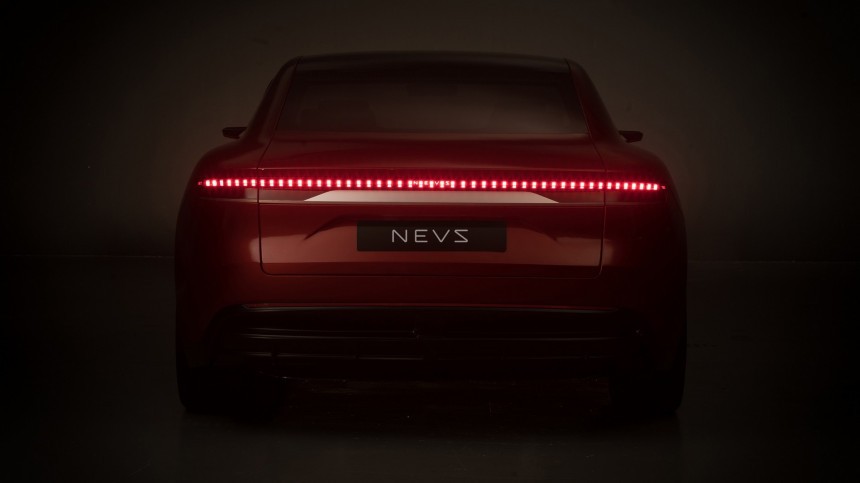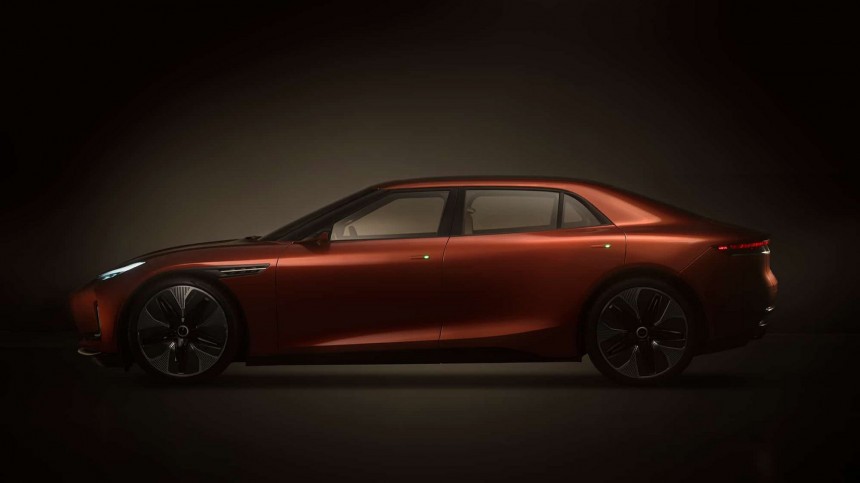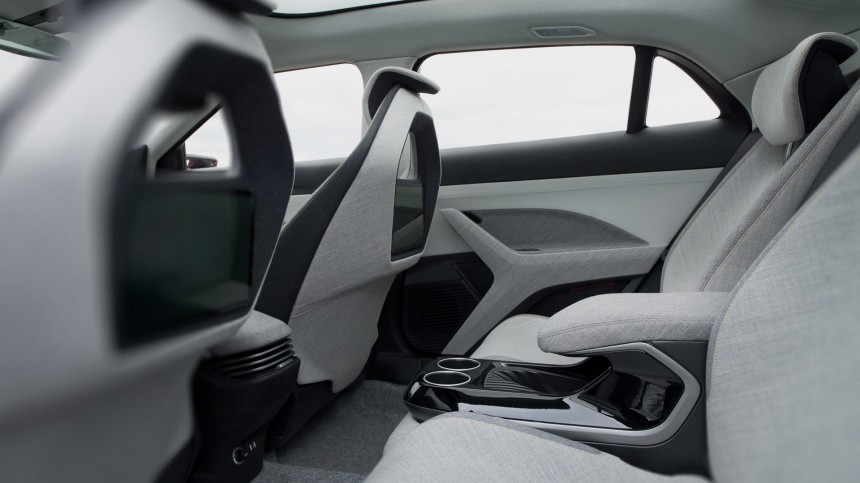I do not doubt that some car enthusiasts cried when they learned that General Motors was not going to save SAAB. The company was not profitable for quite a while, but many must have wished Stellantis bought it and saved it as it did with Opel and Vauxhall. When National Electric Vehicle Sweden (NEVS) bought its assets in 2012, it seemed it would survive in some way. The NEVS Emily GT shows the electric SAAB that never was, but that could still be if someone decides to buy and save the project.
The Swedish website Carup talked to Nina Selander and Peter Dahl. They are, respectively, the NEVS CEO and Emily GT's project manager. According to both of them, NEVS is currently in hibernation mode, but the Emily GT can be sold to a company willing to finish the project and put the car for sale. Dahl believes that it would take one year and a half more to put this car for sale.
To understand the whole story, it is worth remembering what happened after NEVS bought SAAB's assets in 2012. The company tried to establish itself independently, but the Chinese giant Evergrande eventually bought it. Considering the company also owned Protean Electric, it gave NEVS the mission to develop a car with in-wheel motors.
Dahl was a development engineer who started working for SAAB in 1994. NEVS put him in charge of the project in 2019, giving him only ten months to complete it. He used four 90-kW (121-hp) Protean motors, one for each wheel, for a total power of 360 kW (483 hp). As any grand tourer deserves, a high-performance version of the Emily GT may receive new motors to deliver 488 kW (654 hp) and 2,200 Nm (1,622.3 pound-feet). The grand tourer was designed to accept a battery pack of up to 175 kWh and to work at 800V, which allows it to charge faster. NEVS was studying wireless charging for the Emily GT at up to 11 kW.
This massive component would allow the grand tourer to travel around 1,000 kilometers (621 miles). Sadly, it would all be due to the "dumb range" strategy, as Peter Rawlinson classified using large battery packs to achieve longer ranges. A better approach is to pursue efficiency, which allows the car to drive longer with a lighter component. Some documents obtained by Carup show NEVS was probably considering more miniature battery packs: 140-kWh for a long-range derivative and 105-kWh for the regular Emily GT. The probable ranges for these other components were not disclosed. Ironically, the prototypes used a 53-kWh battery pack that was supposed to power an electric version of the SAAB 9-3.
With the motors inside the wheels, the Emily GT can have plenty of space for passengers and cargo. The frunk accommodates 150 liters (5.3 cubic feet), while the trunk can carry 540 l (19.1 ft³) of load. Unfortunately, NEVS did not disclose the dimensions of the grand tourer apart from how high it is: 1.40 meters (55.1 inches). The wheelbase must be quite generous: each wheel is placed at the extremes of the body, with really short overhangs.
The project was supposed to have 20 prototypes, but the pandemic and the financial crisis forced it to build only six vehicles. As Dahl stated in the video embedded below, carmakers usually have two situations for building prototypes. Either they are meant for auto shows – and have to be impeccable – or for testing, which just demands these vehicles to work. NEVS joined the two ideas, which made these prototypes look almost like production cars. The project manager said they only lack airbags and automatic emergency braking (AEB).
With most of the work to put it into production already done, Selander wants to sell the project to a carmaker or a startup that could put it into production. Sadly, I am not aware of many companies that would like to do that. Saudi Arabia wanted to have its own automaker and announced the Ceer brand. VinFast has already developed its vehicles but could wish to expand its lineup. Another company that crossed my mind was Foxconn, especially because it already manufactures a car with in-wheel motors – the Lordstown Endurance. Does that mean any of these companies could be interested? Probably not.
Grand tourers are not among the most popular body types nowadays. If there is one market in which it could go well, it is China, with its love for sedans. According to Dahl, NEVS developed 13 models in the almost 11 years since it bought SAAB's assets. The Emily GT is just one of them – apparently, the only one they were authorized to present. Selander invited interested parties to contact her through the email address disclosed on the NEVS website. Car enthusiasts are now cheering for that to happen as soon as possible.
To understand the whole story, it is worth remembering what happened after NEVS bought SAAB's assets in 2012. The company tried to establish itself independently, but the Chinese giant Evergrande eventually bought it. Considering the company also owned Protean Electric, it gave NEVS the mission to develop a car with in-wheel motors.
This massive component would allow the grand tourer to travel around 1,000 kilometers (621 miles). Sadly, it would all be due to the "dumb range" strategy, as Peter Rawlinson classified using large battery packs to achieve longer ranges. A better approach is to pursue efficiency, which allows the car to drive longer with a lighter component. Some documents obtained by Carup show NEVS was probably considering more miniature battery packs: 140-kWh for a long-range derivative and 105-kWh for the regular Emily GT. The probable ranges for these other components were not disclosed. Ironically, the prototypes used a 53-kWh battery pack that was supposed to power an electric version of the SAAB 9-3.
The project was supposed to have 20 prototypes, but the pandemic and the financial crisis forced it to build only six vehicles. As Dahl stated in the video embedded below, carmakers usually have two situations for building prototypes. Either they are meant for auto shows – and have to be impeccable – or for testing, which just demands these vehicles to work. NEVS joined the two ideas, which made these prototypes look almost like production cars. The project manager said they only lack airbags and automatic emergency braking (AEB).
Grand tourers are not among the most popular body types nowadays. If there is one market in which it could go well, it is China, with its love for sedans. According to Dahl, NEVS developed 13 models in the almost 11 years since it bought SAAB's assets. The Emily GT is just one of them – apparently, the only one they were authorized to present. Selander invited interested parties to contact her through the email address disclosed on the NEVS website. Car enthusiasts are now cheering for that to happen as soon as possible.














